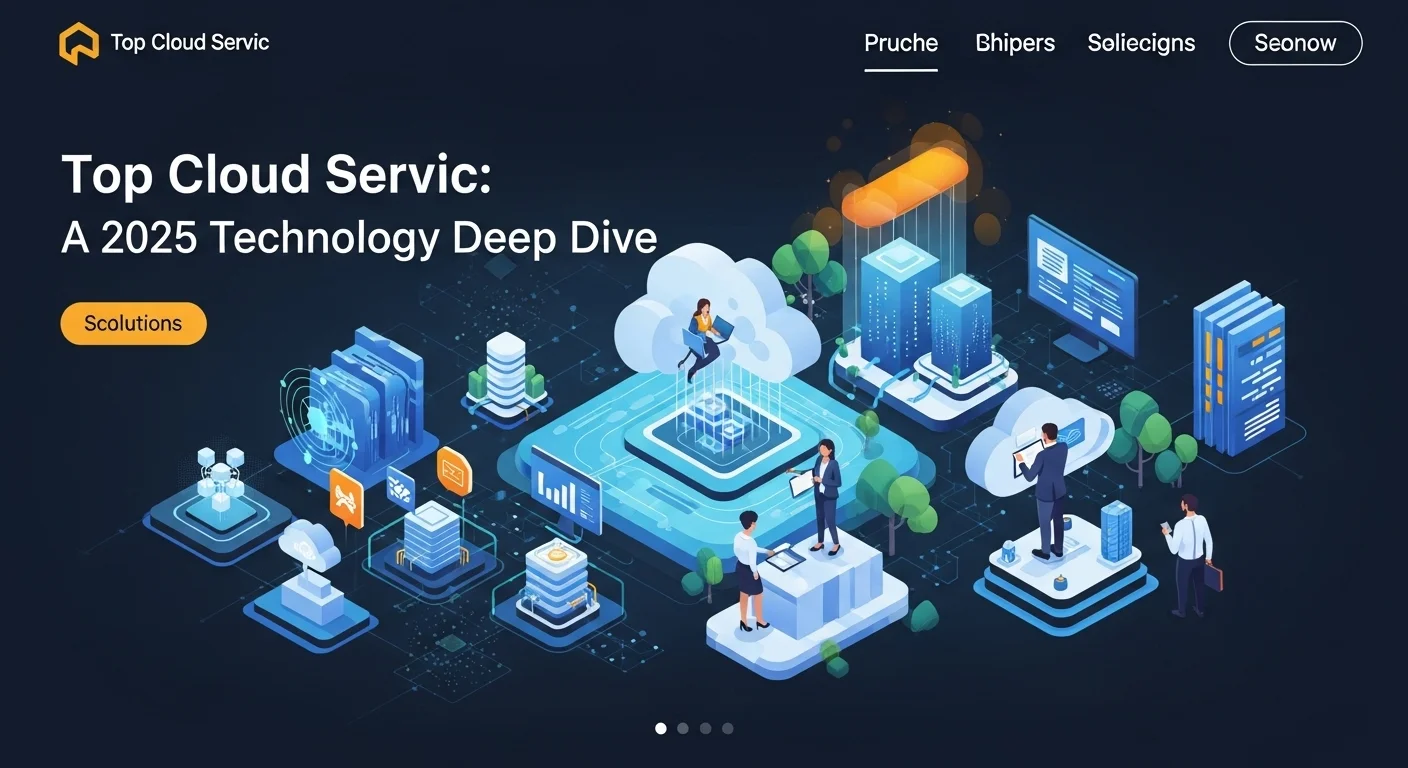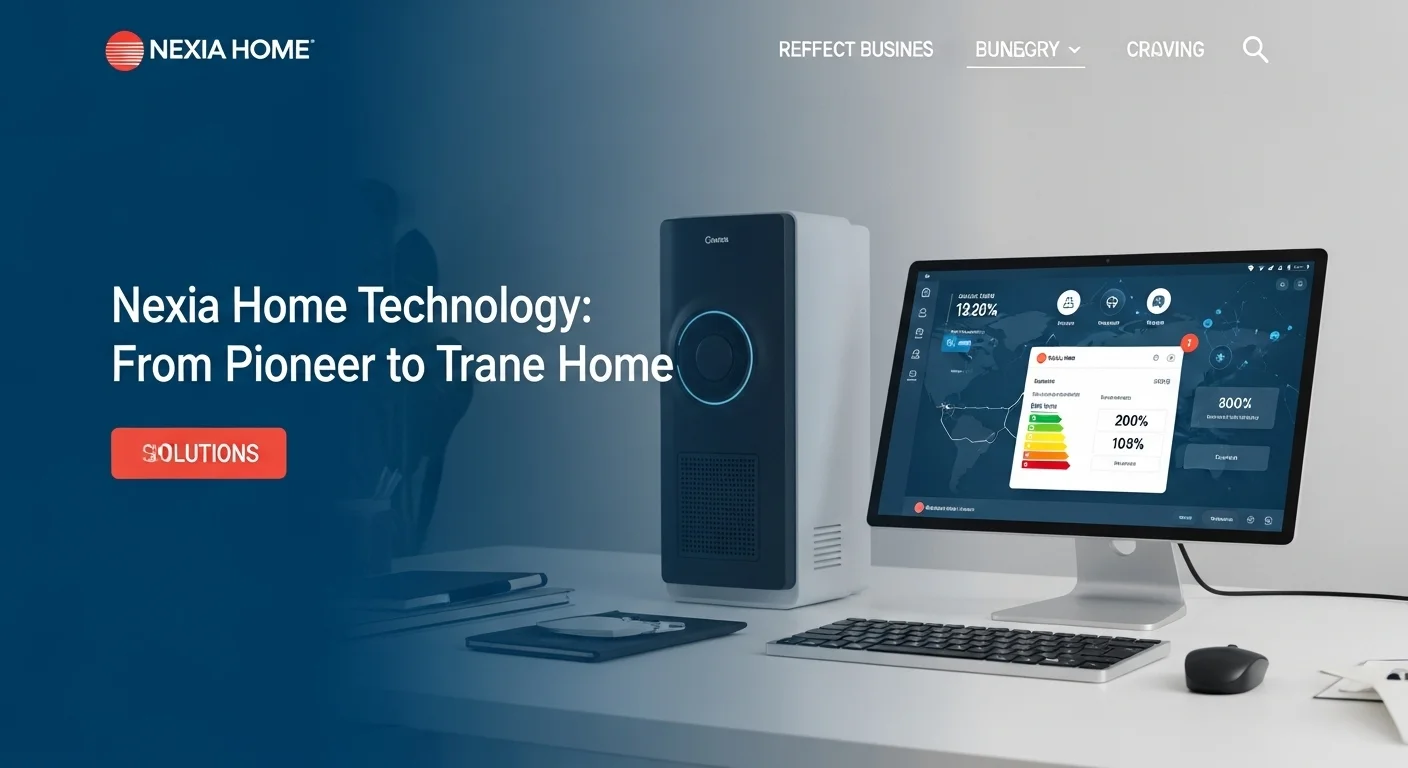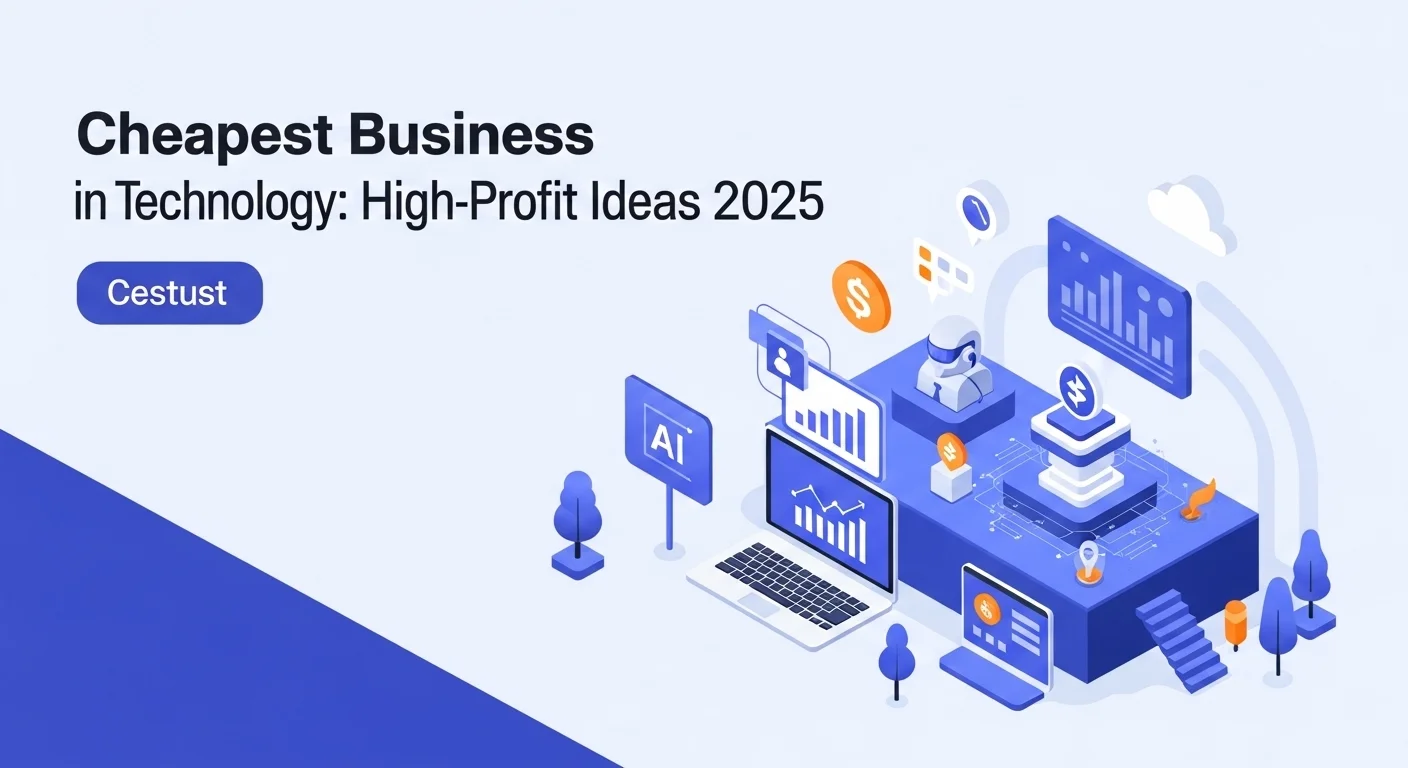My Guide to the Best Cloud Services in 2025: AWS vs. Azure vs. Google Cloud

Executive Summary
In all my years working in tech, I've seen countless businesses make the leap to the cloud. It's the engine of modern innovation, no doubt about it. But choosing the right cloud platform? That's where things get tricky. It’s a decision that can define your company's future agility, cost, and competitive edge. This guide is my personal walkthrough of the cloud landscape. We're going to cut through the jargon and look at the real strengths of the giants: Amazon Web Services (AWS), Microsoft Azure, and Google Cloud Platform (GCP). I'll also touch on other key players you should know. We'll cover everything from the basic infrastructure to the mind-blowing AI tools they offer. My goal is simple: to give you the clear, practical knowledge you need to navigate this complex world and make a smart choice for your business.
Table of Contents
Table of Contents
So, What Exactly Is Cloud Computing?
The word 'cloud' is everywhere, but what does it actually mean for your business? In simple terms, cloud computing means you're accessing computing services—like servers, storage, databases, and software—over the internet from a provider, instead of hosting them on your own physical hardware. I've seen firsthand how this changes the game for companies. It replaces the massive upfront cost and headache of buying and managing servers with a flexible, pay-as-you-go model. This gives businesses incredible agility. Need more power for a big product launch? You can scale up in minutes. Is it a quiet month? You can scale back down just as easily. More importantly, it opens the door to powerful technologies like artificial intelligence (AI) and big data analytics that were once only accessible to corporations with deep pockets. The landscape is led by a few titans who have built enormous, global data centers. Choosing the right partner from this group is one of the most critical decisions a modern business can make, as the competition between them drives constant innovation and better prices for all of us.
The Building Blocks: IaaS, PaaS, and SaaS Explained
To really get a handle on the cloud, you need to understand the three main ways services are offered. I always explain it to my clients with a simple analogy.
IaaS (Infrastructure as a Service): This is the most basic building block. Think of it like leasing a plot of land and a pile of bricks. You get the raw materials—virtual servers, networks, storage—and you have complete control to build whatever you want. You don't have to worry about the physical land or data center, but you're responsible for building and maintaining the house. This model is perfect for businesses that want maximum flexibility and control over their infrastructure. The giants like AWS, Azure, and GCP all have incredibly strong IaaS offerings.
PaaS (Platform as a Service): This takes things a step further. Imagine renting a fully equipped workshop. The building, electricity, and all the tools (like development environments, database systems, etc.) are provided and maintained for you. All you have to do is show up and do what you do best—in this case, write code and build your applications. PaaS is fantastic for development teams because it dramatically speeds up the process of building and launching software.
SaaS (Software as a Service): This is the model you probably use every day without even thinking about it. It's like subscribing to a magazine or a streaming service like Netflix. The software (like Gmail, Salesforce, or Slack) is delivered to you ready-to-use over the internet. You don't manage the software or the infrastructure it runs on; you just log in and use it. This makes powerful software accessible and affordable for businesses of any size.
Your Cloud, Your Way: Public, Private, and Hybrid Setups
Beyond the service models, you also have choices in how you deploy these services. It’s not a one-size-fits-all situation.
A Public Cloud is the standard model, where you share infrastructure with other 'tenants.' It's owned and operated by providers like Amazon, Microsoft, and Google. The benefits are massive scalability, no maintenance, and lower costs. It's the go-to for the vast majority of workloads.
A Private Cloud is like owning your own private, fenced-off data center, for your exclusive use. It can be on your own premises or hosted by a third party. I see this used most often in industries with strict data privacy and regulatory requirements, like banking and healthcare, where control and security are paramount.
A Hybrid Cloud is the best of both worlds. It connects a private cloud with a public cloud, letting them work together. A company might keep its sensitive customer data in its secure private cloud while using the public cloud's immense computing power for analytics. In my experience, this flexible approach has become the standard for most large enterprises.
Finally, a Multi-Cloud strategy involves using services from several different public cloud providers. An organization might use AWS for its core computing, Google Cloud for its machine learning capabilities, and another provider for something else. This helps avoid being locked into a single vendor and allows a business to pick the absolute best tool for every job. The major providers know this is the trend and are making it easier to manage these complex environments.

A Deep Dive into the Top Cloud Providers
Choosing a cloud provider can feel like a monumental task. The market is dominated by a few heavyweights, but there are also strong specialized players worth considering. Here's my breakdown of the top providers based on years of seeing them in action. We'll look at the 'big three'—Amazon Web Services (AWS), Microsoft Azure, and Google Cloud Platform (GCP)—who together hold the lion's share of the market. But we won't stop there. Understanding their core strengths and who they're best for is key to making a choice that will serve you well for years to come.
The Big Three: AWS, Microsoft Azure, and Google Cloud
The cloud market is overwhelmingly led by these three hyperscale providers. Each has a distinct personality and set of advantages.
1. Amazon Web Services (AWS): AWS is the veteran, the one that pioneered the public cloud back in 2006. Its maturity is its biggest strength. With the most extensive portfolio of over 200 services, it’s a massive and reliable platform. I often recommend it to startups that need to move fast and established companies that want the widest array of tools. From the EC2 virtual servers to its S3 storage, AWS has a solution for almost everything. The only catch? Its pricing can be complex, so you need to keep a close eye on it.
2. Microsoft Azure: As the clear number two, Azure's superpower is its integration with the Microsoft ecosystem. If your business already runs on Windows Server, Office 365, and other Microsoft tools, adopting Azure is often a natural, seamless transition. I've personally seen large enterprises benefit immensely from its hybrid cloud capabilities, using tools like Azure Arc to manage their on-premise and cloud resources together. Its strong focus on enterprise needs and compliance makes it a favorite in the corporate world.
3. Google Cloud Platform (GCP): While third in market share, GCP is a technological powerhouse. It was built on the same infrastructure that powers Google Search and YouTube. I always point my data-heavy clients here, especially those obsessed with AI, machine learning, and data analytics. Its tools like BigQuery are best-in-class, and its expertise in Kubernetes (the container orchestration system that originated at Google) is unmatched. It's often favored by tech-forward, data-driven companies that love its open-source-friendly culture.
Comparative Analysis of the Top 5 Cloud Service Providers
To give you a fuller picture, let's expand beyond the big three to round out the top five.
4. Oracle Cloud Infrastructure (OCI): Oracle has made a serious push into the cloud, targeting its massive base of enterprise customers. OCI was engineered from the ground up to handle high-performance, demanding workloads—especially Oracle's own databases. In my experience, clients are often surprised by its performance and competitive pricing, particularly for moving data out of the cloud. They are also making smart moves in the multi-cloud space.
5. IBM Cloud: With its legacy in enterprise tech, IBM Cloud has carved out a niche in serving large, highly regulated industries like finance and healthcare. Its strength lies in hybrid and multi-cloud solutions. It's also a major player in enterprise AI with its Watson platform, along with specialized services for blockchain and the Internet of Things (IoT). For businesses undergoing a complex digital transformation, IBM's deep industry expertise can be a major asset.
Here is a simplified comparison table I use to help clients visualize the landscape:
| Provider | Market Share (Approx. Q1 2025) | My Take on Key Strengths | Who I'd Recommend It For |
|---|---|---|---|
| AWS | ~29% | The most mature and comprehensive platform with a huge ecosystem. | Almost anyone, from startups to enterprises needing maximum flexibility. |
| Microsoft Azure | ~22% | Incredible integration with Microsoft products and fantastic hybrid cloud tools. | Large enterprises, especially those already in the Microsoft ecosystem. |
| Google Cloud (GCP) | ~12% | Unmatched in data analytics, AI/ML, and container management with Kubernetes. | Data-intensive, cloud-native companies focused on innovation. |
| Oracle Cloud (OCI) | ~3-4% | Exceptional performance for enterprise apps, database expertise, and great pricing. | Existing Oracle customers and companies running performance-critical applications. |
| IBM Cloud | ~2% | Strong in hybrid multi-cloud, enterprise AI (Watson), and regulated industries. | Large enterprises in finance and healthcare needing specialized, secure solutions. |
Remember, choosing a provider depends entirely on your specific needs. The cloud world is always changing, and I expect to see even deeper integration of generative AI and other advanced services from these leaders as we head further into 2025.

Smart Strategies to Master Your Cloud Experience
Just moving to the cloud isn't enough. I've seen too many companies stumble because they treat it like their old data center. To truly succeed, you need a strategy. Without one, the flexibility you hoped for can turn into runaway costs and security nightmares. Here are the practical tips I share with every client to help them get it right, whether they're using one provider or several.
Keeping Costs in Check: A Lesson in FinOps
One of the biggest shocks for new cloud users is the variable monthly bill. This is where FinOps—a fancy term for bringing financial discipline to your cloud spending—becomes essential. It's all about making smart trade-offs between speed, quality, and cost.
1. Tag Everything: The first rule I teach is: if you can't see where the money is going, you can't control it. Implement a strict tagging policy for every resource. This lets you categorize costs by project, team, or application, so you know exactly who is spending what.
2. Rightsize Your Resources: It's tempting to over-provision resources 'just in case,' but this is a major source of waste. Regularly check if your virtual machines and databases are actually using the power you're paying for. Most providers have tools that will flag underused resources for you.
3. Commit for Discounts: If you have workloads that run consistently, don't pay the on-demand price. Talk to your provider about Savings Plans or Reserved Instances. By committing to one or three years of usage, I've seen clients cut their bills by over 70%.
4. Automate Shutdowns: Your development and test environments don't need to run 24/7. A simple script to shut them down overnight and on weekends can save a surprising amount of money.
5. Use Spot Instances Wisely: For non-critical tasks that can be interrupted, like data processing, you can use 'spot instances.' This is basically bidding on a provider's unused capacity at a massive discount—often up to 90% off.
Cloud Security: It's a Shared Responsibility
Security in the cloud is a partnership. I always use this analogy: your cloud provider is responsible for the security *of* the cloud (the physical data centers, the hardware), but you are responsible for security *in* the cloud (your data, your applications, your access controls). It's like they secure the apartment building, but you're still responsible for locking your own front door. Here are the non-negotiables:
1. Use the Principle of Least Privilege: Grant every user and application the absolute minimum permissions they need to do their job. This dramatically reduces the potential damage if an account is ever compromised.
2. Encrypt Everything, Always: Your data should be encrypted when it's stored (at rest) and when it's moving over the network (in transit). All major providers make this easy to do. Use their key management services to control your encryption keys.
3. Enforce Multi-Factor Authentication (MFA): A password is not enough. Require MFA for all users, especially administrators. It's one of the single most effective things you can do to prevent unauthorized access.
4. Monitor Constantly: Keep a close eye on your environment. Use the provider's native logging and monitoring tools to track all activity and set up alerts for suspicious behavior. Regular security audits are a must.
5. Build Virtual Walls: Use tools like virtual private clouds (VPCs) and firewalls to segment your network. This contains any potential breach and controls the flow of traffic between your applications.
6. The cloud is always evolving. Here's what I'm most excited about and where I see smart companies investing their time.
Serverless Computing: This is a game-changer. With services like AWS Lambda or Azure Functions, you can run your code without thinking about servers at all. You only pay for the split-second your code is actually running. This dramatically cuts costs and operational work for many applications.
Containers and Kubernetes: Docker and Kubernetes have become the gold standard for building and running modern applications. The top providers all offer managed Kubernetes services that make it easy to deploy, scale, and manage your applications, even across different clouds.
AI and Machine Learning Integration: This is the next frontier. The big providers are embedding AI into everything they do, from security monitoring to easy-to-use AI platforms. Learning to leverage these services will be a massive competitive advantage in the coming years.
For a deeper dive into building a well-architected cloud environment, I often recommend resources like the Google Cloud Architecture Framework. It provides excellent best practices and guidance directly from the source.
Expert Reviews & Testimonials
Sarah Johnson, Business Owner ⭐⭐⭐
The information about Top Cloud Services is correct, but I think they could add more practical examples for business owners like us.
Mike Chen, IT Consultant ⭐⭐⭐⭐
Useful article about Top Cloud Services. It helped me better understand the topic, although some concepts could be explained more simply.
Emma Davis, Tech Expert ⭐⭐⭐⭐⭐
Excellent article! Very comprehensive on Top Cloud Services. It helped me a lot for my specialization and I understood everything perfectly.



